Energy Bill
This AP article "Energy bill a disappointment, and opportunity, for wind, solar and biofuel boosters," summarizes the legislation, and this article, "Midwest embraces ethanol as boost to farmers, economy," discusses ethanol.
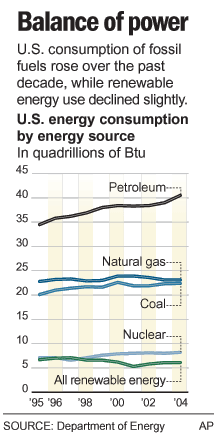
"A community’s physical form, rather than its land uses, is its most intrinsic and enduring characteristic." [Katz, EPA] This blog focuses on place and placemaking and all that makes it work--historic preservation, urban design, transportation, asset-based community development, arts & cultural development, commercial district revitalization, tourism & destination development, and quality of life advocacy--along with doses of civic engagement and good governance watchdogging.
This AP article "Energy bill a disappointment, and opportunity, for wind, solar and biofuel boosters," summarizes the legislation, and this article, "Midwest embraces ethanol as boost to farmers, economy," discusses ethanol.

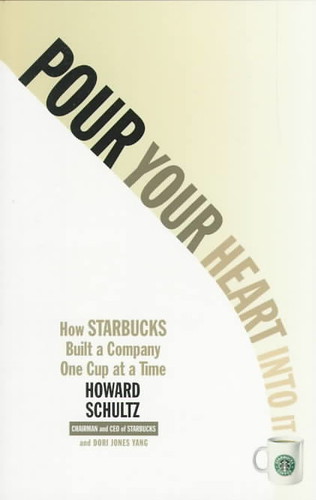 Pour Your Heart into It : How Starbucks Built a Company One Cup at a Time is by the Chairman of the company.
Pour Your Heart into It : How Starbucks Built a Company One Cup at a Time is by the Chairman of the company.
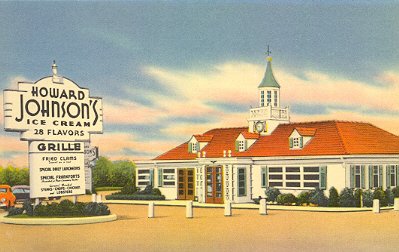 Howard Johnson restaurants and hotels once dotted the countryside, just like Starbucks are seemingly ubiquitous in Washington, DC.
Howard Johnson restaurants and hotels once dotted the countryside, just like Starbucks are seemingly ubiquitous in Washington, DC.  Barbara L. Salisbury/The Gazette. "We can no longer be satisfied with the status quo," said Derrick Plummer, a founding member of Upscale Prince George's, a new nonprofit trying to lure high-end retailers to the county.
Barbara L. Salisbury/The Gazette. "We can no longer be satisfied with the status quo," said Derrick Plummer, a founding member of Upscale Prince George's, a new nonprofit trying to lure high-end retailers to the county. 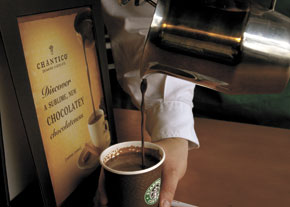 Upscale non-coffee drinks are a big component of the Starbucks marketing program. Photo by Joyce Lin/Daily Bruin (UCLA).
Upscale non-coffee drinks are a big component of the Starbucks marketing program. Photo by Joyce Lin/Daily Bruin (UCLA).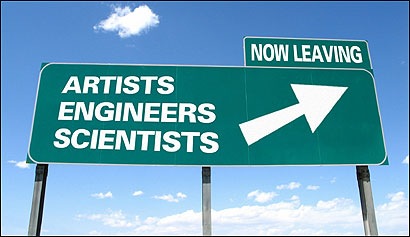 Illustration from the Boston Globe.
Illustration from the Boston Globe.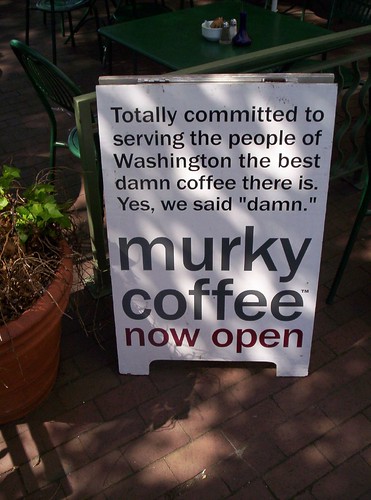 7th Street SE, Washington, DC.
7th Street SE, Washington, DC.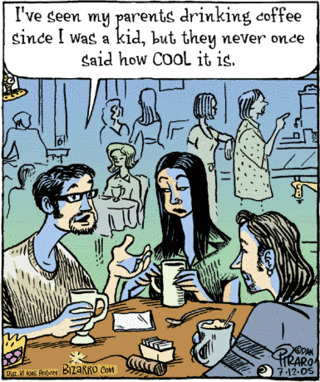 Can Upscale Prince George's make the county cool?
Can Upscale Prince George's make the county cool?
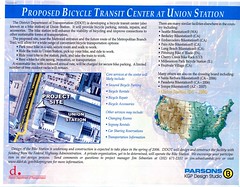
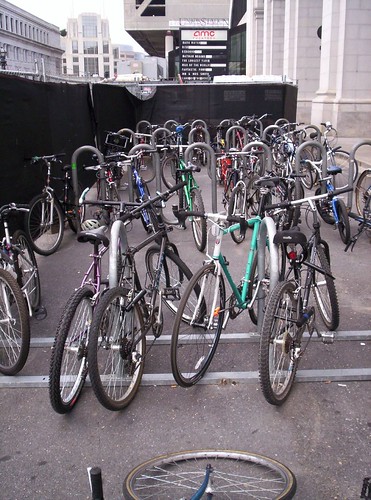 "Current conditions."
"Current conditions."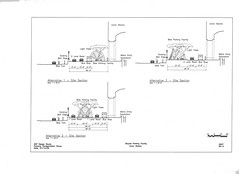 Site plan alternatives.
Site plan alternatives.Today's Examiner has a commentary by Henry Jaffe on "A School plan that might work," which highlights a proposal by DC Chief financial officer Natwar Gandhi, to create a separate "DC School Construction Authority" to develop and execute a plan for rehabilitating DC's school buildings.
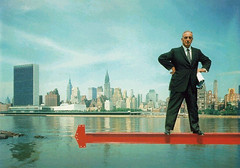 Robert Moses.
Robert Moses.(I forgot to mention that the Philadelphia Business Journal actually has a twice-monthly column on tourism. That's a beat that the Post and the Washington Business Journal need to add...)
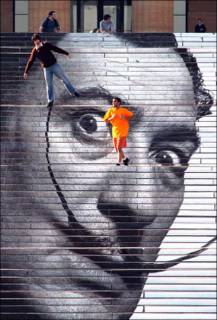 Today's Philadelphia Inquirer has a story on the impact of the recent Dali exhibit, "Lucrative impact of Dalí show on region: Dalígoers also stayed to eat, sleep, shop and sightsee, a survey found, boosting the local economy $55 million.") AP photo.
Today's Philadelphia Inquirer has a story on the impact of the recent Dali exhibit, "Lucrative impact of Dalí show on region: Dalígoers also stayed to eat, sleep, shop and sightsee, a survey found, boosting the local economy $55 million.") AP photo.
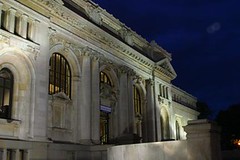
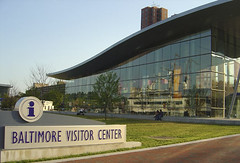
Labels: architecture, arts-culture, asset-based community development, cultural heritage/tourism, cultural planning, museums, tourism
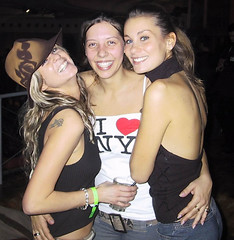 Who doesn't love NYC?
Who doesn't love NYC?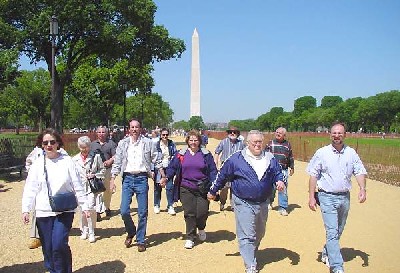 Tourists determinedly taking Washington.
Tourists determinedly taking Washington.
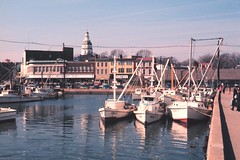 Annapolis. Photo from Maryland Delivered.
Annapolis. Photo from Maryland Delivered. 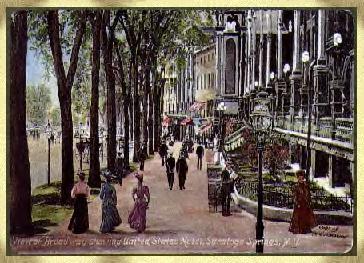 Saratoga Springs in the late 1800s.
Saratoga Springs in the late 1800s.
This is my take on Norton Commons, the New Urbanist development 15+ miles from the center of Louisville. It appears in the current issue of LEO Weekly, one of the alternative weeklies in Louisville, Kentucky. The other week, the paper featured articles on housing, which I mentioned in the blog.
Somehow I missed this report from the Brookings Institution: "Turning Around Downtown: Twelve Steps to Revitalization;" when it came out a few months ago. Its 12 steps are applicable to urban revitalization in neighborhood commercial districts, not just in a downtown or "Central Business Districts". I do think the paper could talk a bit more about transparency and participation, but all in all it's informative and useful.
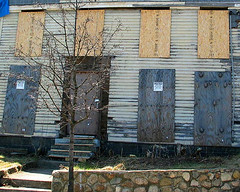 Green infrastructure? Flickr photo by Liz Hurley.
Green infrastructure? Flickr photo by Liz Hurley.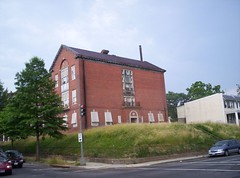 Old Bruce School at Kenyon Street and Sherman Avenue. Up for declaration as surplus property...
Old Bruce School at Kenyon Street and Sherman Avenue. Up for declaration as surplus property...
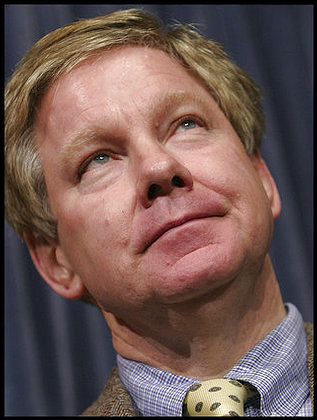 Congressman Tom Davis probably has more power over DC than the Mayor... Photo by Melina Mara for the Washington Post.
Congressman Tom Davis probably has more power over DC than the Mayor... Photo by Melina Mara for the Washington Post.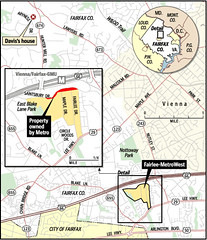 Graphic from the Washington Post.
Graphic from the Washington Post.
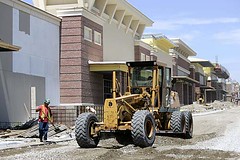 Photo: David Guralnick / The Detroit News. The Fairlane Green shopping center, set to open in the fall, will focus on the environment with features that include green spaces, bio-swales and energy-reducing building features.
Photo: David Guralnick / The Detroit News. The Fairlane Green shopping center, set to open in the fall, will focus on the environment with features that include green spaces, bio-swales and energy-reducing building features.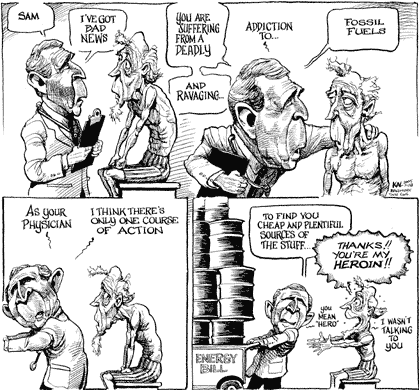 Today's editorial cartoon by KAL of the Baltimore Sun.
Today's editorial cartoon by KAL of the Baltimore Sun.
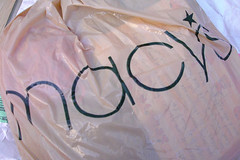
 Victor and Terri Church with their Cadillac bicycles at their home in Rochester Hills. Cadillac has entered into licensing agreement with Kent Bicycles to create Cadillac line of bikes in hopes the vehicle brand will become more associated with younger folks. (The Detroit News/David Coates).
Victor and Terri Church with their Cadillac bicycles at their home in Rochester Hills. Cadillac has entered into licensing agreement with Kent Bicycles to create Cadillac line of bikes in hopes the vehicle brand will become more associated with younger folks. (The Detroit News/David Coates). (The Detroit News/David Coates).
(The Detroit News/David Coates). Photo by David L'Hoste.
Photo by David L'Hoste.
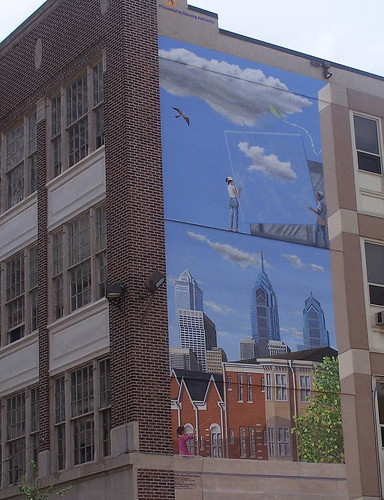 Mural at 21st and Chesnut Streets, Philadelphia. Flickr Photo by Philanthropoid.
Mural at 21st and Chesnut Streets, Philadelphia. Flickr Photo by Philanthropoid.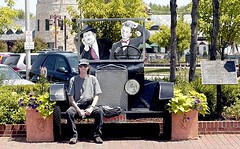 Steven Heff waits for a bus on a bench decorated with a Laurel and Hardy theme on Oak Park Avenue in Tinley Park. Twenty-five benches are decorated along five blocks. (Chicago Tribune photo by Ed Wagner)
Steven Heff waits for a bus on a bench decorated with a Laurel and Hardy theme on Oak Park Avenue in Tinley Park. Twenty-five benches are decorated along five blocks. (Chicago Tribune photo by Ed Wagner)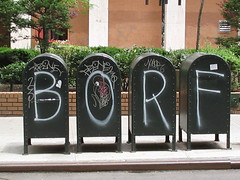 Borf photo from Flickr, by Michael Oliver.
Borf photo from Flickr, by Michael Oliver.
The Baltimore Sun reports on the yanking of a certificate of occupancy for a multi-unit apartment that is the site of a great deal of disorder. Northwestern Police District Deputy Major Mary Ellerman is quoted as saying "The only way to rid this area of the problem is to demolish." See "City targets landlord in new tack to rid apartments of drugs, guns."
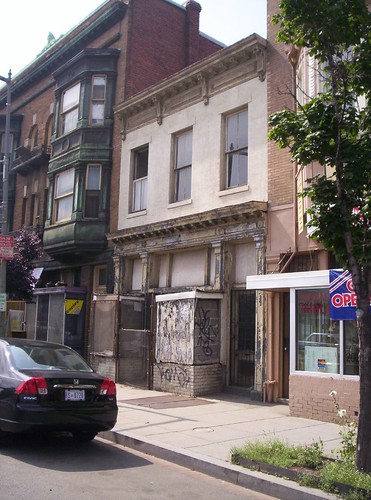 406 H Street, vacant for more than 20 years.
406 H Street, vacant for more than 20 years.Labels: historic preservation, housing, receivership
Since students are outside of school more than they are in school, I am frustrated with lackluster community involvement in the quest for improving our city's schools. I am told that Superintendent Janney is oriented to this, although there is no sight of such now. I wrote in a June blog entry about the success of family learning contracts in some of the poorest areas of Brazil (discussed in a Harvard Business Review article about "positive deviance").
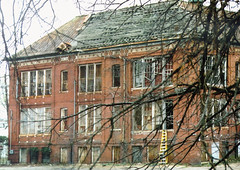 While I think the state of the schools physical plant is important, it's really more about the mode and intent of "production" while the students are in class. Lamentably, the hundreds of millions of dollars spent on improving school physical plants in Kansas City, Missouri as part of a broad desegregation order hasn't really lead to greater voluntary integration... Photo of Crummell School by Peter Sefton.
While I think the state of the schools physical plant is important, it's really more about the mode and intent of "production" while the students are in class. Lamentably, the hundreds of millions of dollars spent on improving school physical plants in Kansas City, Missouri as part of a broad desegregation order hasn't really lead to greater voluntary integration... Photo of Crummell School by Peter Sefton.AP reports on Panaderia Taza, a coffee shop in Phoenix targetting the Mexican (remember that all Hispanics are not the same market segment-wise, a point missed in the article) market, with Mexican pastries, a Mexican coffee brand, and cafe con leche, and mexclado con azucar (coffee with sugar)--and their plans for franchising.
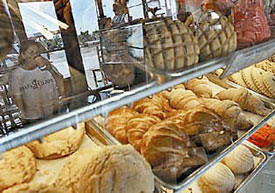 Panaderia Taza photos by Matt York, Associated Press.
Panaderia Taza photos by Matt York, Associated Press.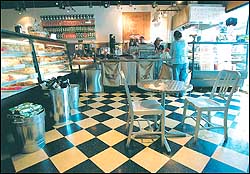
 And the New York Times reports on Kaldi, a coffee shop in Ethiopia that copies the Starbucks model, but sells only Ethiopian coffees. See "Addis Ababa Journal: Along With That Caffeine Rush, a Taste of Seattle."
And the New York Times reports on Kaldi, a coffee shop in Ethiopia that copies the Starbucks model, but sells only Ethiopian coffees. See "Addis Ababa Journal: Along With That Caffeine Rush, a Taste of Seattle." Coffee siphons.
Coffee siphons.
Communities may apply for special designation as a Preserve America Community, which recognizes communities that:
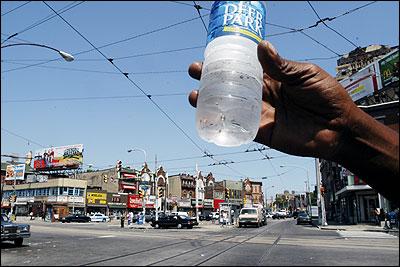 Photo: TOM GRALISH / Philadelphia Inquirer. Penn professor Elijah Anderson describes this part of Germantown Avenue, where public transit and retailing join, as a “hyperghetto.”
Photo: TOM GRALISH / Philadelphia Inquirer. Penn professor Elijah Anderson describes this part of Germantown Avenue, where public transit and retailing join, as a “hyperghetto.”
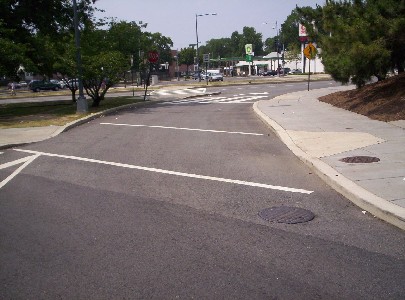 Turning right onto Maryland Avenue from Benning Road
Turning right onto Maryland Avenue from Benning Road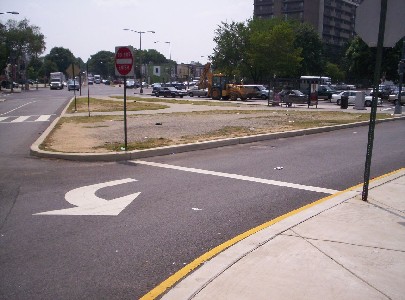 Traffic island between Bladensburg Road and Maryland Avenue
Traffic island between Bladensburg Road and Maryland Avenue
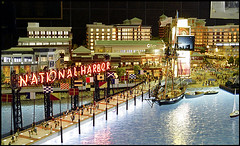

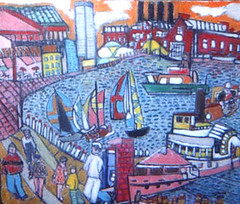
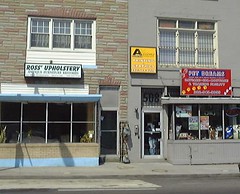
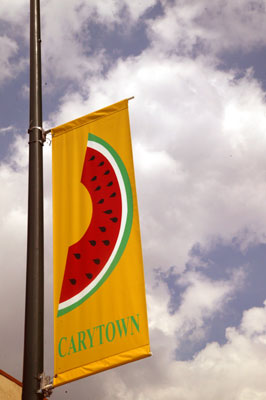
Labels: commercial district revitalization, urban design/placemaking, urban renewal
Yesterday's blog entry "A different take on DC's plan for an architectural icon baseball stadium," engendered a trenchant comment as well.
 Photo by Mike Kepika of the San Francisco Chronicle. People leaving the streetcars to see a Giants game at PacBell Park.
Photo by Mike Kepika of the San Francisco Chronicle. People leaving the streetcars to see a Giants game at PacBell Park.
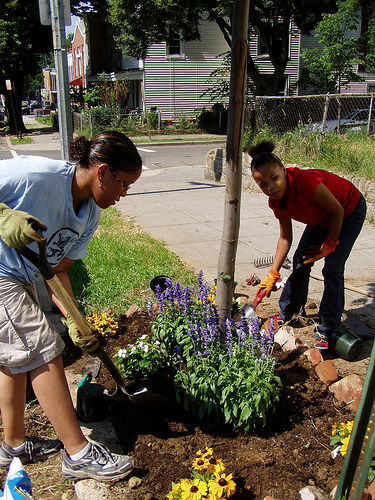 Trinidad residents out last Saturday morning. Photo by Elise Bernard.
Trinidad residents out last Saturday morning. Photo by Elise Bernard.
 Beautiful Decay is a journal featuring graffiti and urban decline.
Beautiful Decay is a journal featuring graffiti and urban decline. Flickr photo by Indy Charlie.
Flickr photo by Indy Charlie.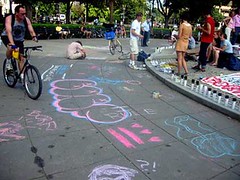 Borf-in at Dupont Circle. Flickr photo by Catherine A.
Borf-in at Dupont Circle. Flickr photo by Catherine A.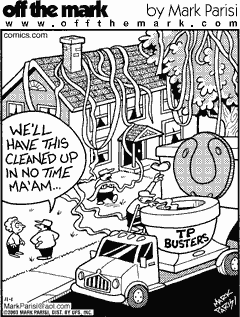 Vandalism in the suburbs.
Vandalism in the suburbs.